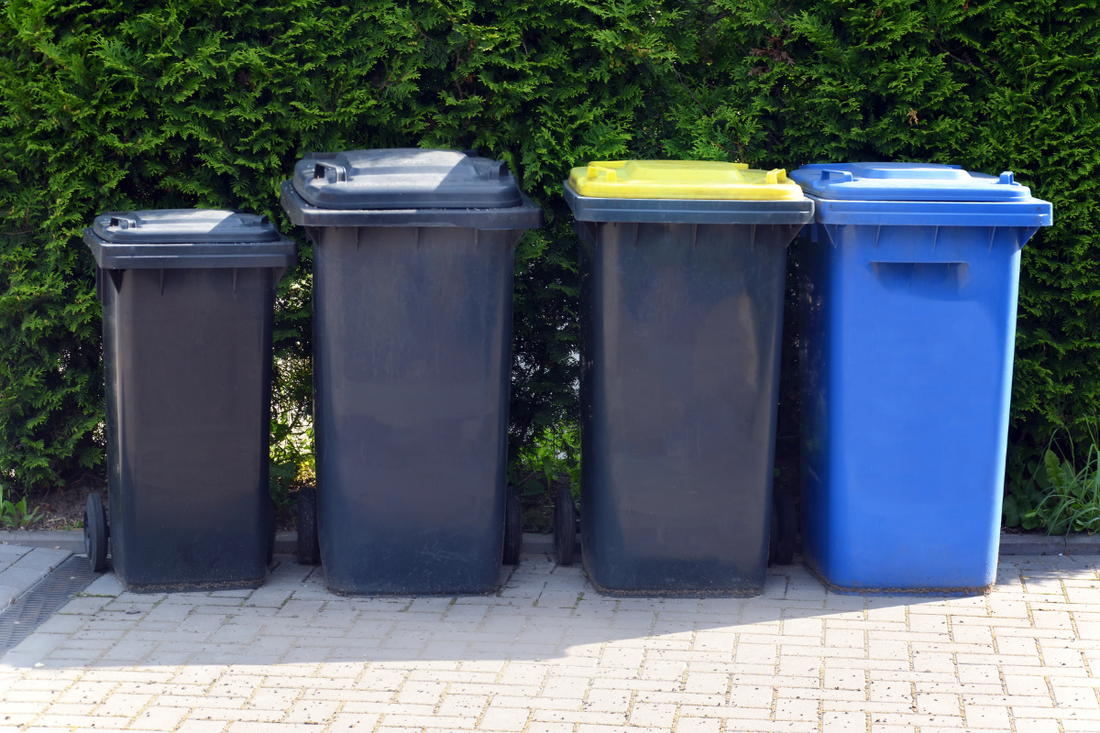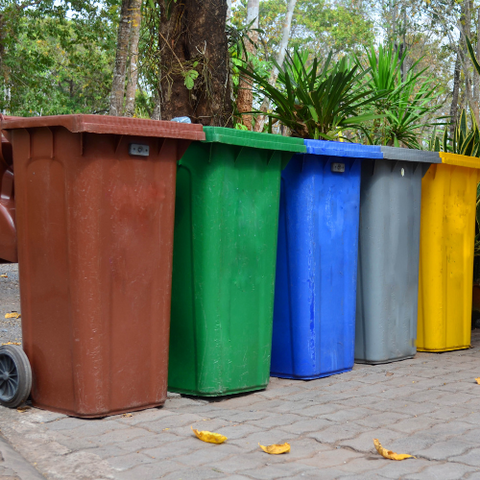OR
Express Checkout
We guarantee to have the lowest price! Find the same bin for a cheaper price and we will beat it!

It's a sound that we've all become accustomed to. The rolling of wheels on tarmac as neighbours push their wheelie bins into a curb side position for the next day's collection. The deep roar of the waste collection truck the next morning as it prepares to empty our waste bins.
But once upon a time, wheelie bins didn't exist! It's all too easy to take waste collection for granted in a modern society, but can you imagine life without a wheelie bin?
It's fair to say that the modern plastic wheelie bin is firmly embedded within modern society. That said, it's taken a great deal of evolution over the years to become the organised hygienic waste collection service that we rely on today.
Let's jump back to when it all started for the wheelie bin!

Despite a few marked discoveries, even the most ambitious of historians have struggled to identify the first wheelie bin prototype. However, what they have found goes further back than you'd expect.
Going back to the prehistoric era, paintings found in the Himalayas depicting wheeled containers have suggested that waste disposal factored even during primitive times. (Yes, even cave dwellers used bins to store excess woolly mammoth bones!)
Jump to AD 79 when Mount Vesuvius destroyed the City of Pompeii. What was presumed to be fossilised remains of a wooden cart used for collecting rubbish were found in the remains.
Of course, the term wheelie bin was yet to come to the fore. Prehistoric humans weren't exactly rolling out their wheelie bins for a weekly collection, and neither were the ancient Romans! But the general philosophy of collecting and transporting waste appears to have been in place many years ago.
It was in 1930s America that poor hygiene and inefficiency relating to waste disposal dictated the need for a wheelie bin. Frequently torn bin bags posed public health issues while cylindrical plastic or metal bins were cumbersome to use. Plastic bin equivalents proved to be equally as troublesome for storing hot ashes from fires.
While the idea of an efficient waste disposal system was firmly in place, the execution wasn't doing quite so well. A standardised waste system was needed.
Around this time, US company Dempster Brothers Inc. discovered the first-hand issues associated with hauling construction waste. In order to alleviate the problem, they devised metal-wheeled containers with motorised vehicles for easy manoeuvrability.
With the need for only one person to load the metal wheelie bin, their labour decreased by an enormous seventy-five percent compared to old waste disposal methods!
The Dempster-Dumpster had become a hit.
In the 1950s, their new and improved version entitled the Dempster-Dumpmaster became the first commercially successful front-loading rubbish truck in the US. With arms at the front designed to pick up the waste bins and lift over the truck to the hopper, it marked the beginning of the waste collection truck that we've come to know in recent times.

Prior to the 1980s, households and waste collectors contended with two-handled, clunky metal bins. They were heavy, inflexible, and created a loud noise during morning collections. Unsurprisingly, refuse workers were struggling with severe back pains associated with shifting heavy and cumbersome waste bins during waste collection.
Metal bins definitely marked an improvement from the waste disposal of old, but there was still a way to go to implement optimum efficiency.
In 1968, a UK company named Frank Rotherham Mouldings invented the first plastic wheelie bin. In a twist of fate, the plastic wheelie bin was designed to conveniently transport waste from one side of the Frank Rotherham Mouldings factory to the other, and not for household or business waste collection. A happy accident, some might say!
Serving merely as a functional tool for workers, the plastic wheelie bin was spotted by a random health and safety inspector during a routine inspection. He identified the potential of the plastic wheelie bin in terms of efficiency, convenience, and a resolution to workers' back problems.
In that moment, the plastic wheelie bin was born.
Waste disposal methods will always be shaped by contemporary meanings of waste, and societies’ requirements associated with waste management. The wheelie bin is no exception, and over the years has been proliferated, changed shape, got bigger/smaller, and changed colour numerous times.
One of the most significant changes relates to the evolution of wheelie bins with greater capacities and more flexibility than standard bins. When the UK's Household Recycling Act was introduced in 2003, every household was provided with at least two separate waste wheelie bins. This is where colour coded wheelie bins came into play, arguably one of the most prominent changes that will no doubt continue into the future.
The Importance of Coloured Wheelie BinsThough confusing in the early days, different coloured wheelie bins inform residents and businesses where certain types of waste should be disposed of. Some UK councils choose colours that fit with their local surroundings, like black wheelie bins and green wheelie bins, while areas such as Liverpool have opted for purple wheelie bins (a mixture of red to blue) to represent their allegiance to Liverpool FC and Everton FC within the city.
While colour may seem like nothing more than an aesthetic, it’s more important than you think, and can have a profound impact on recycling rates. A study by environmental charity Hubbub and Ecosecurity called #LeedsByExample found that simply changing the colouring of bins had a significant and positive impact on the amount of recycling collected.
So important is recycling in today’s world that the design of the wheelie bin has been rigorously assessed over time to suit the needs of the masses. Environmental damage caused by increasing amounts of business and household waste has dictated the need for a durable, hygienic, and high-volume capacity wheelie bin design.

In the modern age, plastic wheelie bins have become an integral part of our lives. They have evolved with the necessary sophistication to endure extreme weather conditions, UV radiation, chemicals and general wear and tear associated with daily use. They’re also easy to clean for the sake of hygiene and come with reinforced wheels.
Compared to days of old, wheelie bins are now available in a wide range of sizes, colours and evaluated by the European standard for emptying, interoperability and handling safety (EN840). Often manufactured from virgin materials, they also promise greater strength and durability compared to mixed material options. And when they've eventually reached the end-of-life stage, they're 100% recyclable!
From wooden carts and poor handling to reinforced wheels and weatherproof, how times have changed for the plastic wheelie bin!
Contact us today for wheelie bins at unbeatable prices!